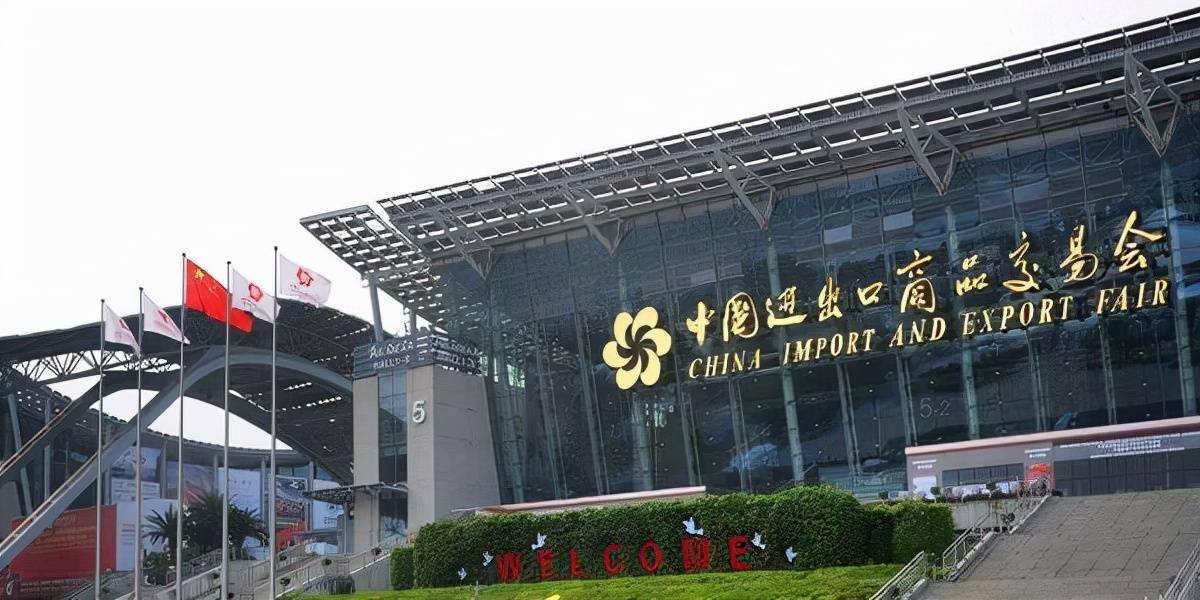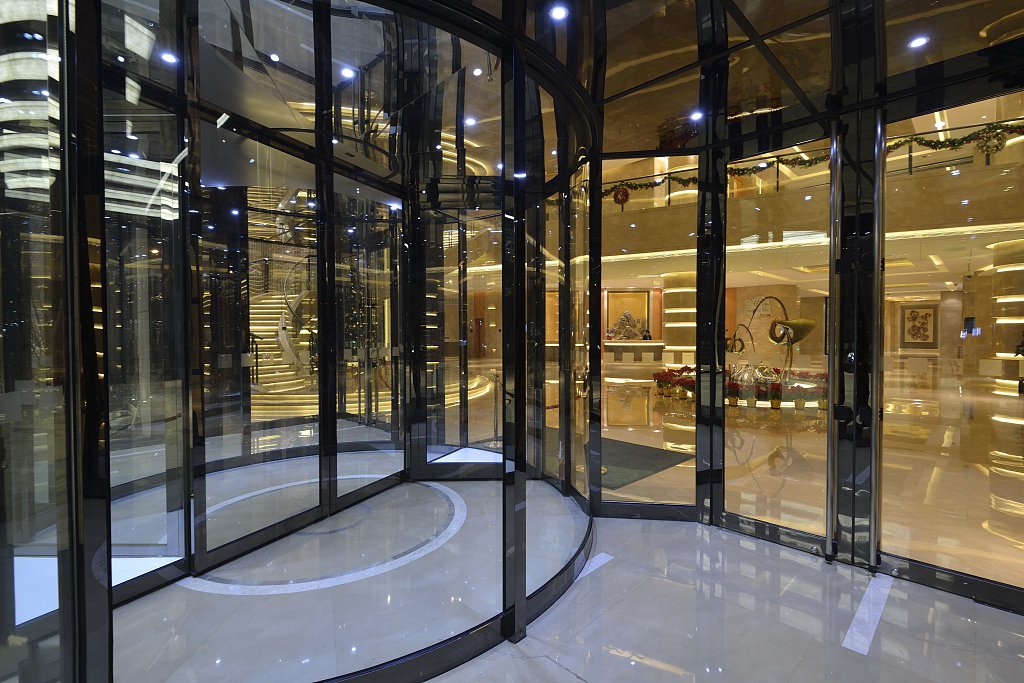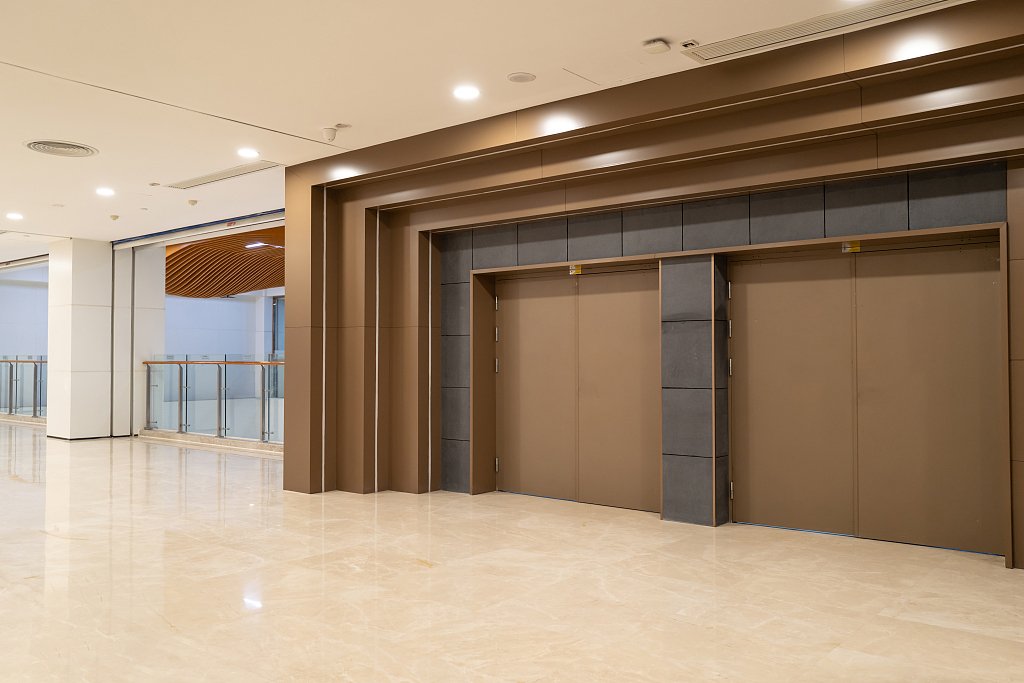Exploring Stainless Steel Column Wraps and Copper Cladding in Modern Architecture
Table of Contents
In modern building design, the balance between functionality and aesthetics has become a defining factor in how structures are perceived. Columns, once valued purely for their structural purpose, have now evolved into essential design elements that shape the visual identity of a space. Architectural innovations such as stainless steel column wraps, cladding copper, and architectural column wraps represent this transformation in modern architecture. These elements not only enhance visual appeal in both interior and exterior spaces but also provide lasting protection to the underlying structure.
Understanding what is copper cladding and how interior column covers, stainless steel column covers, and column enclosure systems function allows architects, designers, and builders to make informed decisions that improve both the durability and aesthetic sophistication of their projects.
The Purpose and Design of Stainless Steel Column Wraps
Stainless steel column covers have become increasingly common in commercial buildings, hotels, transportation terminals, and shopping complexes. They not only mask unsightly structural elements but also add a touch of sophistication and durability that blends well with the demands of modern architecture.
How Stainless Steel Column Wraps Are Constructed
It is basically a fabricated shell to encase an existing column, which can be manufactured in various shapes such as round, square, and polygonal designs, depending on the structural form. The usual fabrication involves precision cutting, rolling, and welding of stainless steel sheets, followed by surface texturing in mirror, brushed, or sandblasted surfaces. This enclosure will fit over the column and provide both protection and a sleek appearance.
Functional and Aesthetic Benefits
From form to function, stainless steel column wraps serve as versatile design choices: they protect the column against corrosion, scratches, and external impact, while serving as a design statement that elevates the architectural ambiance. Their reflective properties allow for better light distribution inside, enhancing spatial brightness. Besides that, stainless steel requires less maintenance; it ensures that the wraps will maintain their polished finish for many years.
Applications Across Architectural Settings
From the lobby in high-end hotels to corporate offices and public transportation hubs, column covers made from stainless steel create a sense of modern sophistication. They are quite valuable in very high-traffic environments where durability is necessary. For outside applications, grades such as 316 stainless steel are preferred due to their better corrosion resistance. In interior applications, 304-grade steel with a brushed finish delivers a soft, professional look.
Understanding What Copper Cladding Means in Architectural Design
Where stainless steel epitomizes modern precision, copper cladding exudes warmth, tradition, and artistry in architectural elements. This section will outline what copper cladding is, its most important features, and how it contrasts with other metallic finishes.
Definition and Characteristics of Copper Cladding
Copper cladding denotes the work of covering either surfaces or other structural elements- such as columns and façades-with sheets of copper or copper alloy. The resultant appearance is rich and luxurious, changing with time. Copper naturally generates a patina that changes from bright metallic orange to deep brown and eventually to a greenish hue; it provides a living surface telling the story of time and environment.
Aesthetic Advantages and Design Expression
Designers often decide on cladding copper in projects necessitating warmth and distinction. Unlike the cool tones of stainless steel, copper brings in a sense of heritage and craftsmanship. The character of copper changes visually through years, adding character and depth to architectural spaces. This dynamic appearance makes it ideal for museums, boutique hotels, and civic buildings where the structure’s visual identity is part of its storytelling.
Durability and Maintenance Considerations
Copper is durable and naturally corrosion-resistant, but requires proper handling during installation. If the patina is desired, it requires very little maintenance; if the original shine must be preserved, periodic polishing and protective coatings are necessary. While it is generally softer than stainless steel, when properly supported, copper cladding remains a very viable and long-lasting architectural finish.
Architectural Column Wraps and Interior Column Covers in Context
With architecture moving increasingly towards integrated design approaches, architectural column wraps and interior column covers will no longer be secondary features but are instead meant to balance structural integrity with aesthetic appeal, fusing technical performance with the right aesthetic expression.
The Role of Architectural Column Wraps
Architectural column wraps serve two purposes: they mask the roughness of structural elements and enrich the rhythm of a building visually. When installed across a lobby or hall, they provide uniformity and balance to the space. The wraps can be fabricated according to the style required by the project, whether it be minimalist, industrial, or classical. In modern design, metallic finishes such as stainless steel and copper are preferred because of their reflective capacity and their ease with which they interact with other materials like glass, stone, and wood.
Interior Column Covers and Their Aesthetic Function
They are widely applied to public buildings and corporate interior spaces where appearances are important. Column covers provide smooth, unbroken areas, which are easy to clean and maintain. Such covers assist designers in aligning column designs with other interior elements such as wall panels, ceilings, and flooring systems. The seamless finish of stainless steel or copper column wraps ensures continuity in aesthetic identity even within large spaces.
Integration with Lighting and Space Planning
Column wraps and covers can incorporate lighting design to further create a spatial experience. Shiny surfaces expand light, while texture or brushed metal finishes softly reflect light. The use of these materials with light transforms mundane structural elements into bold design features that dictate the eye’s movement around the space.
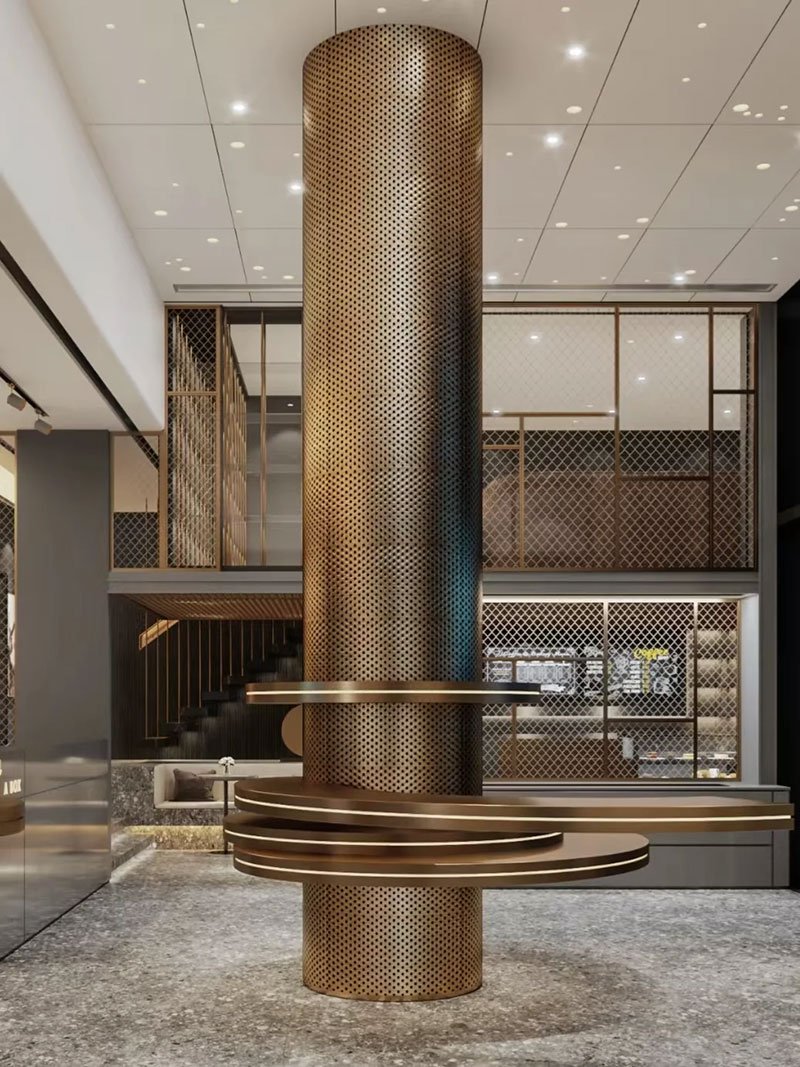
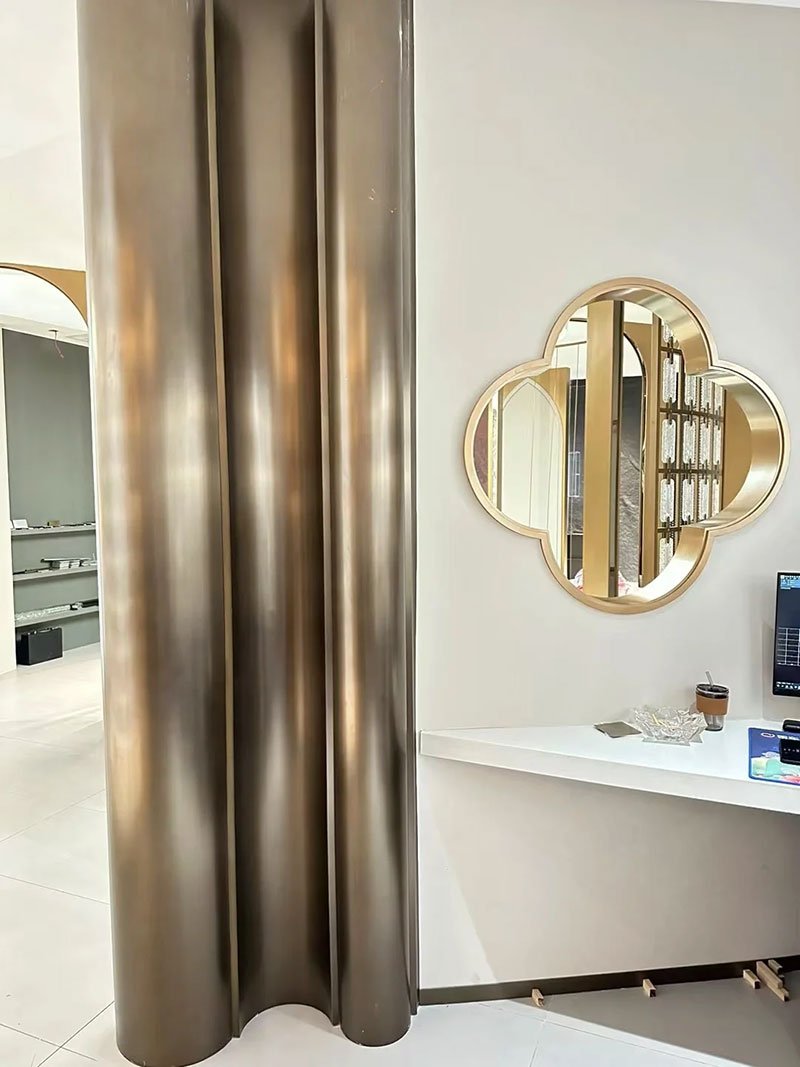

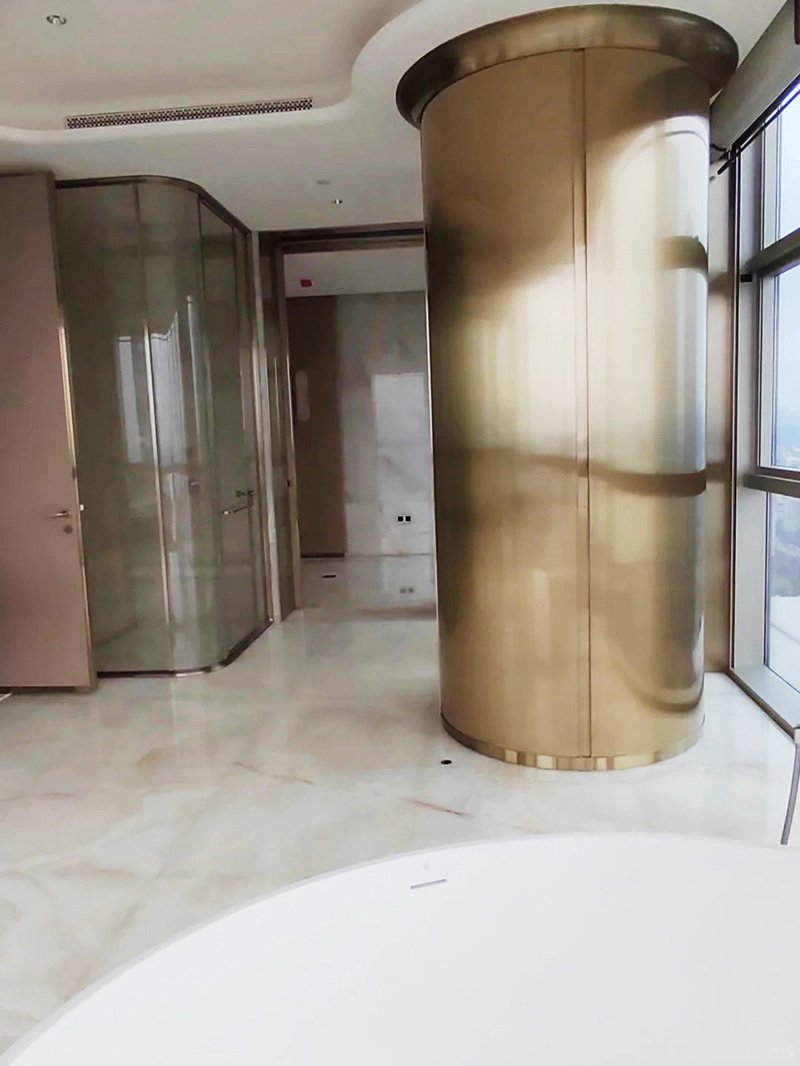
Stainless Steel Column Covers and Column Enclosure Solutions
In the realm of stainless steel column covers and column enclosures, there is a need to understand how such systems contribute to both design and engineering performance. Their precision fabrication and modular design make installation straightforward and reliable.
Technical Composition and Fabrication
Columns are often fabricated in sections—halves, quarters, or segmented panels—in order to easily install around existing columns. These sections are joined by means of concealed fasteners or alignment rings for a clean, continuous surface. A structural support or insulation material can also be added according to environmental requirements. Finishes include the satin or hairline textures of stainless steel, as well as PVD-coated metallic tones.
Durability and Longevity in Harsh Environments
In outdoor or industrial settings, the corrosion resistance of stainless steel becomes a defining advantage. It withstands rain, humidity, and temperature variation without losing integrity. The material also resists fire and impact, adding a layer of safety for public spaces. A stainless steel column enclosure can last decades with high-precision fabrication while maintaining its architectural beauty.
Customization and Architectural Versatility
Most manufacturers can provide options for diameter, height, and finish. Examples include diameters from 100 mm to 2000 mm to accommodate designs for slender and monumental columns. The high adaptability of stainless steel column covers makes them ideal in diversified architectural applications, from sleek airport terminals to luxury retail environments. This clean geometry and reflective quality can be easily adapted to minimalist or ornamental styles.
The Role of Cladding Copper in Modern Building Aesthetics
The application of cladding copper to column design represents a refined approach to the blending of craftsmanship with modern technology. While stainless steel appeals to precision and permanence, copper offers warmth and organic transformation.
Combining Materials for Design Harmony
Many architectural projects combine copper and stainless steel in the same design for visual balance. The wraps of stainless steel are often used in functional zones that require durability, while copper cladding highlights the focal areas, such as entrances or feature columns. This interplay between materials brings visual hierarchy and richness to architectural compositions.
Environmental and Sustainable Aspects
Copper is among the most sustainable metals for construction. It is fully recyclable and retains its performance characteristics even after being recycled. Similarly, stainless steel is also eco-friendly, with its strength for longevity and minimal maintenance. Together, they inspire sustainability both in form and function, meeting modern green building criteria.
Modern Interpretations of Traditional Materials
Architects increasingly reinterpret copper cladding in contemporary ways. Instead of traditional patinas, modern treatments include pre-aged, sulfurized, or vibrated finishes. These options allow designers to control the visual tone of the project while still celebrating the authenticity of copper. In contrast, stainless steel’s neutral tone creates balance, ensuring that both materials complement each other in mixed-metal architectural compositions.
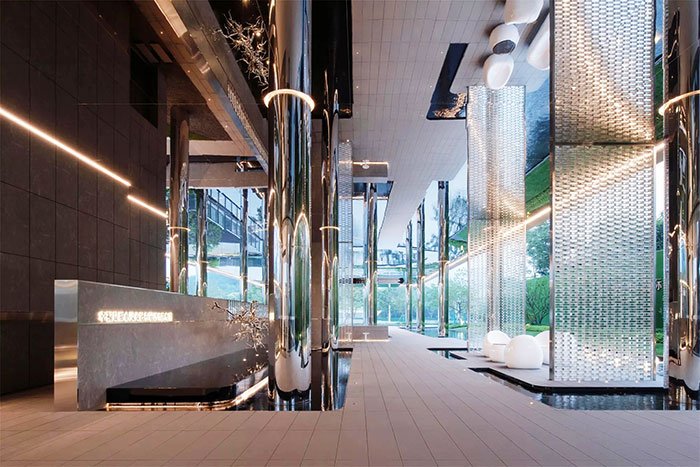
Conclusion
Columns have evolved from purely structural components into vital architectural features that define spatial character and design integrity. The adoption of stainless steel column wraps, stainless steel column covers, copper cladding, and interior column covers exemplifies how craftsmanship and technology intersect to achieve elegance and endurance.
Stainless steel provides precision, longevity, and a polished aesthetic that aligns with modern architectural demands. Copper, on the other hand, introduces warmth, texture, and evolving beauty that celebrates the passage of time. Together, they offer architects and designers a versatile toolkit for transforming spaces.
When specifying column enclosures or architectural column wraps, careful consideration of material grade, finish, and environment ensures the perfect balance between design vision and structural practicality. By integrating these high-quality materials into your project, you create architectural expressions that are both timeless and functional — a reflection of the art and science that define modern building design.
By choosing these stainless steel column wraps and copper cladding products from JYF METAL, you will give your architectural project a lasting, elegant, and high-quality finish that enhances both durability and visual appeal for years to come.
You Might Also Like
Please Share This
Recent Posts
- The Indispensable Role of Metal Decoration in Hotel Engineering
- Why Engineering Projects Need Professional Stainless Steel Customization
- Differences Between Indoor and Outdoor Metal Decoration and Material Selection
- Reinventing Urban Barriers with Stainless Steel Traffic Bollards
- Stainless Steel Road Bollards for Modern Urban Spaces

